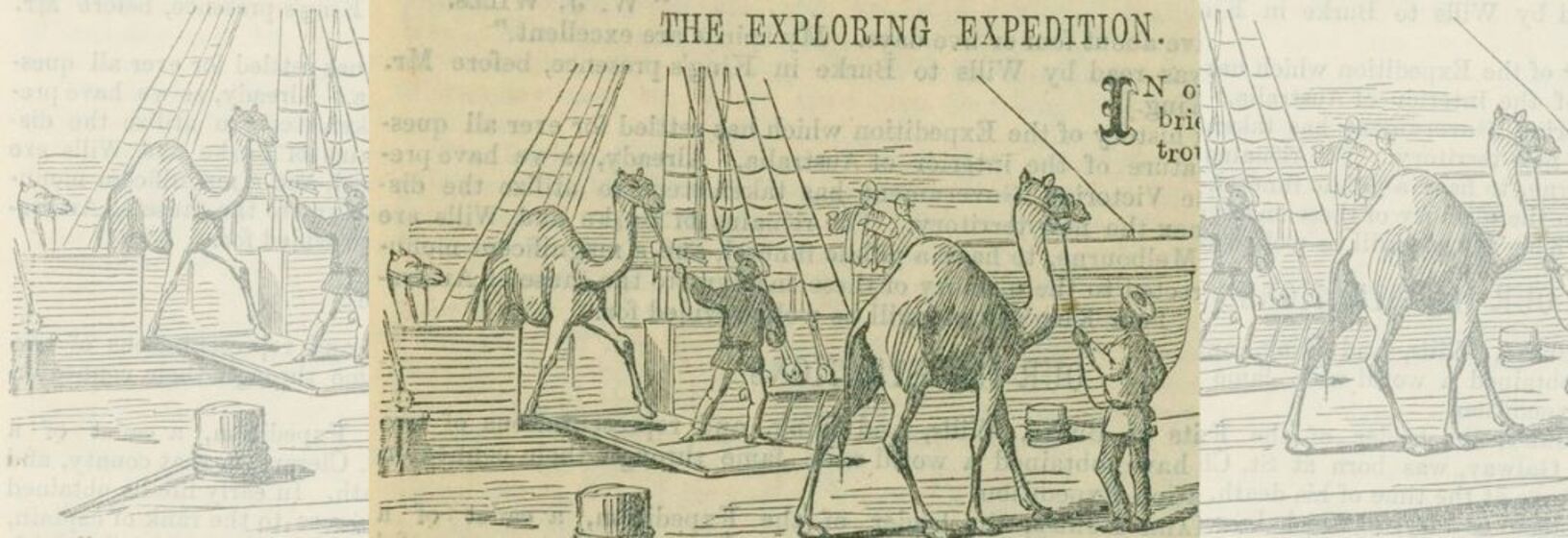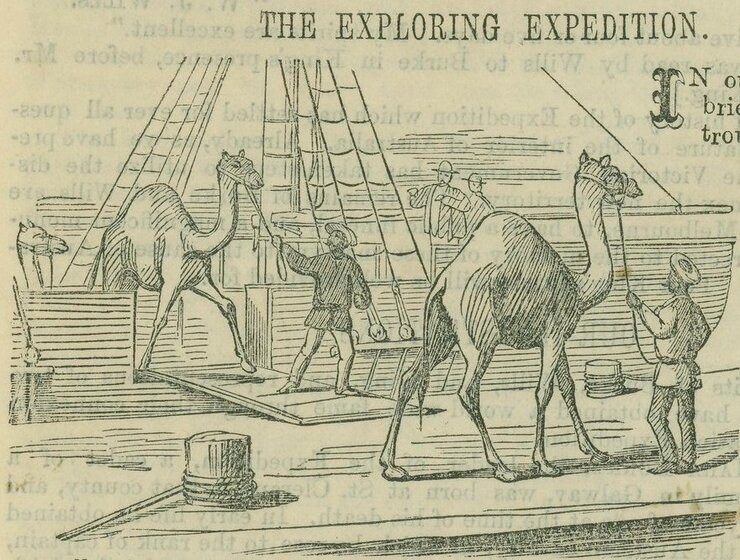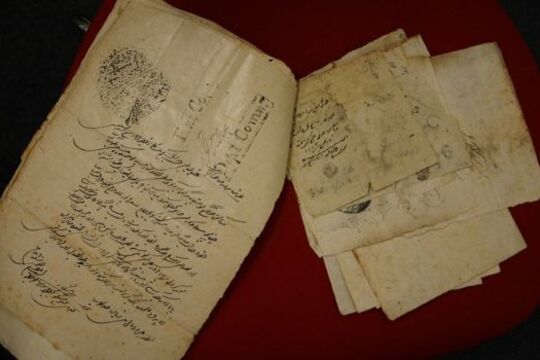Burke and Wills: Have Camels Will Travel
Dromedary camels were introduced to Australia in 1840. The first significant shipment, however, was made to service the Burke and Wills expedition, which was the first exploring party to use camels, as well as horses, for transporting supplies.
In 1858, George Landells, who had worked as a horse trader in India, wrote to the Victorian Government explaining how the camel was ideally suited to the Australian landscape. He offered to travel to India and purchase camels on behalf of the Victorian government for use in exploration, and as the basis of a breeding stud. The government’s Board of Science and Zoological Gardens Committee agreed that the camel would be useful on the Australian continent, and Landells was authorised to borrow money from the Indian Government and make the purchase.
Landells traveled through India, Pakistan and Afghanistan to source the animals, engaging eight camel drivers to assist him on the journey from Karachi to Melbourne in December 1859, arriving mid-June 1860.
He was hailed for his travels through the ‘very unsettled’ lands by the English Scindian Newspaper, and similarly lauded in Melbourne where the ‘exotic’ animals caused a sensation, as did their handlers, identified variously as Indians, Sepoys, and Malays.
Partly in response to his fame, Landells was appointed second in command of the Burke and Wills expedition. He was also appointed officer in charge of the camels.
Landells recruited John Drakeford and John King, who had helped him bring the animals from Karachi to Melbourne, and four of the eight handlers: Samla (described by Becker as a Hindu), Dost Mahomet (or Botan), from Guznee; Esau Khan (or Hissand or Isaah), Belooch, who came from Mahadpoor in the Punjab, and another man from Kelat.
The expedition party departed Melbourne with 26 camels. As the expedition progressed, Landells and Burke disagreed over their treatment and Landells resigned in Menindee.
Four of the 26 camels were left at Menindee. Dost Mahomet stayed with 16 at the Coopers Creek depot. Burke and Wills took six animals with them on their trek to the Gulf and John King, travelled with them, to care for. Some of the animals strayed or were lost, others were abandoned. Burke, Wills, Charlie Gray and John King ate the last of them, as they struggled back from the Gulf of Carpentaria.
However the Burke and Wills Expedition was not the end of the story. Camels had proved their worth in negotiating the harsh and dry Australian interior and camels became an increasingly important form of transport in the Australian inland. Between 1870 and 1900, over 15,000 camels and 2000 cameleers were brought to Australia. The cameleers were commonly known as “Afghans” although small in number, they made a vital contribution to Australia’s exploration and development.
Feral camels now roam across outback Australia. In response, markets for live camels and camel meat have developed. It is more than likely that the descendents of Landells’ camels are among those that now roam the Australian continent.














